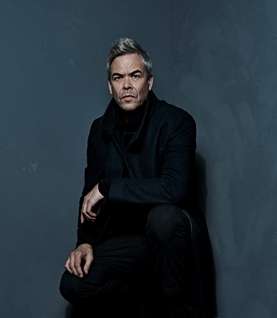|
Back
Hannu Lintu Guest Conducts the Orchestre symphonique de Montréal Montreal
Maison symphonique de Montréal, Place des Arts
11/20/2019 - & November 21, 2019
Antonín Dvorák: Cello Concerto in B minor, Op. 104, B. 191
Witold Lutoslawski: Symphony No. 4
Leos Janácek: Sinfonietta, Op. 60
Alban Gerhardt (Cello)
Orchestre symphonique de Montréal, Hannu Lintu (Conductor)

H. Lintu (© Veikko Kähkönen)
Hannu Lintu, Chief Conductor of the Finnish Radio Symphony Orchestra, took over the reins of the Orchestre symphonique de Montréal (OSM) this week in two concerts devoted to Eastern European music. The most challenging work for the average listener was Lutoslawski’s last symphony, Symphony No. 4. Commissioned by the Los Angeles Philharmonic Orchestra, the composer conducted the first performance with them on February 5, 1993. It is sometimes considered the swansong for modernism. About 22 minutes in length, it is comprised of one movement in two sections, the first is based on a lyrical melody introduced by the clarinet then taken up by prominent solos from other instruments. The main, second section is built around a cantabile theme whose development gathers in force to an emotional climax before closing with a soft coda. Lintu wrought a fine performance from the large orchestra, maintaining a felicitous balance among all sections which played with clarity and rigor. The orchestral musicians also deftly handled moments in the score that Lutoslawski reserved for improvisation.
The other work of equal duration, Janácek’s Sinfonietta, premiered in 1926, features augmented brass and was dedicated to the “Czechoslovak Armed Forces”. The five-movement work opens and ends with a brilliant brass fanfare scored for nine trumpets, two tenor tubas and two bass trombones which were positioned in the highest balcony above the stage. The three intervening movements run a range of moods from exhilarating and breezy, to insistent, pulsating and reflective. Again, Lintu led a tightly-measured performance highlighted with some magical turns on the tuba from Austin Howle. The double basses could have been more expressive in the final movement.
The evening began with a passionate performance of Dvorák’s Cello Concerto, one of the repertory’s longest and most beloved cello concertos. Alban Gerhardt provided color and brought out plenty of detail in the lyrical sections but the heroic moments, as with the Orchestra, could have been more refined. Lintu, a highly-expressive conductor, allowed the brass to overwhelm the orchestra early on, and they were regularly plagued by uneven entries. The first movement’s noble second theme, has one of the most glorious melodies written for the horn, and was imbued with a smooth, burnished sound.
Lintu is one of over 20 guest conductors appearing with the OSM this season. As this is Kent Nagano’s last season as music director, the search goes on for his replacement.
Earl Arthur Love
|